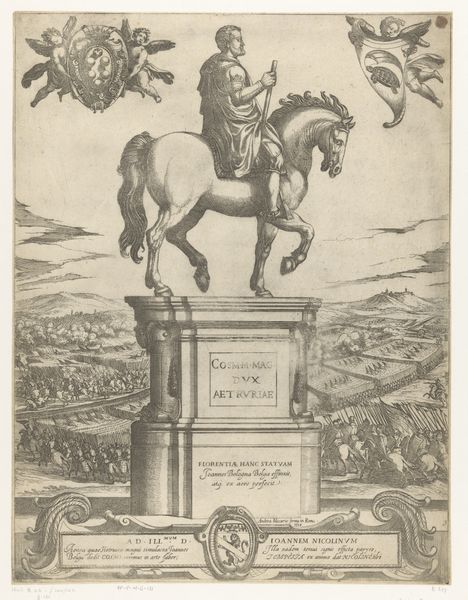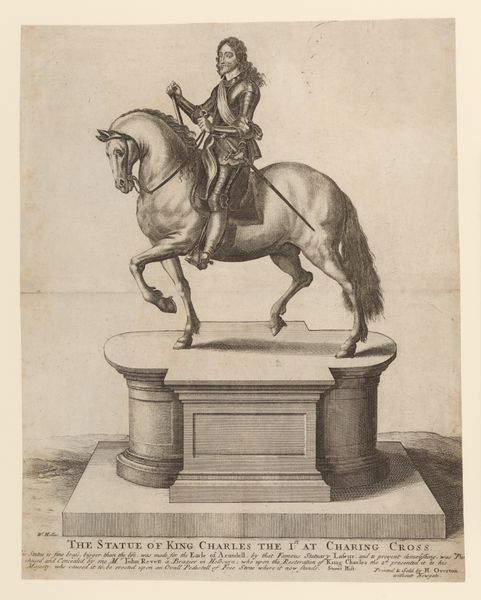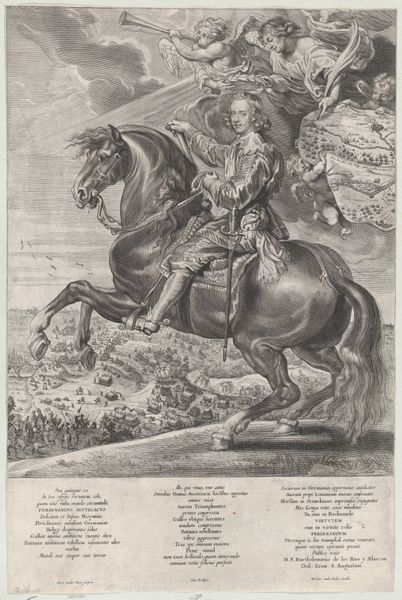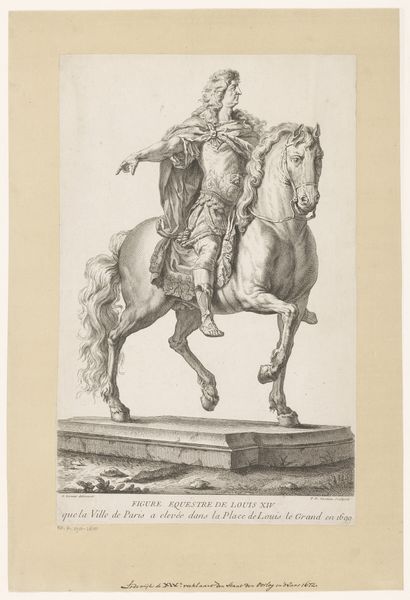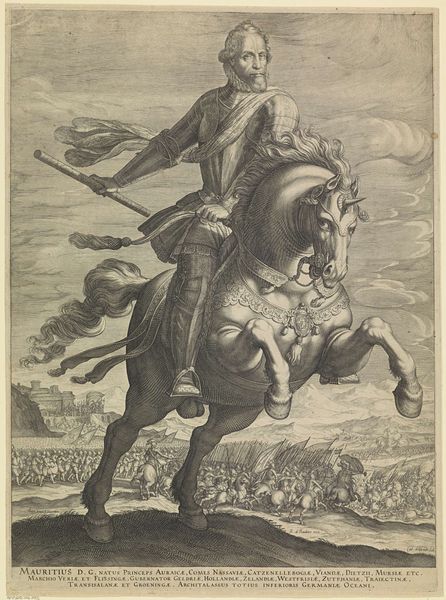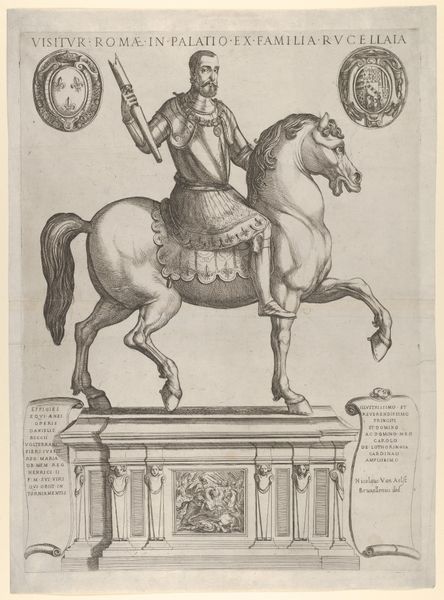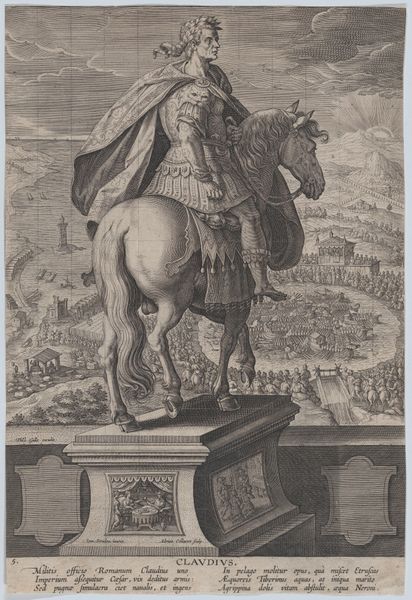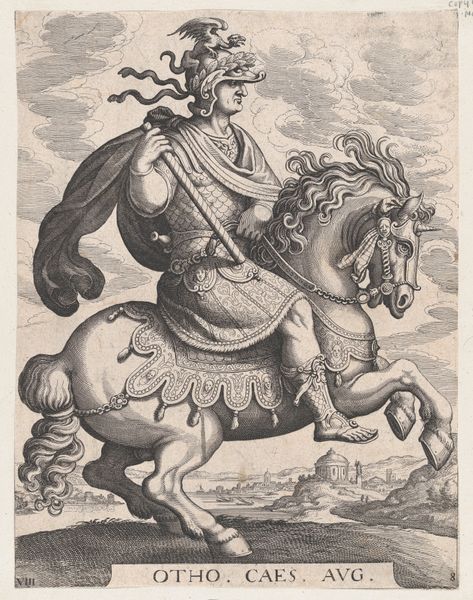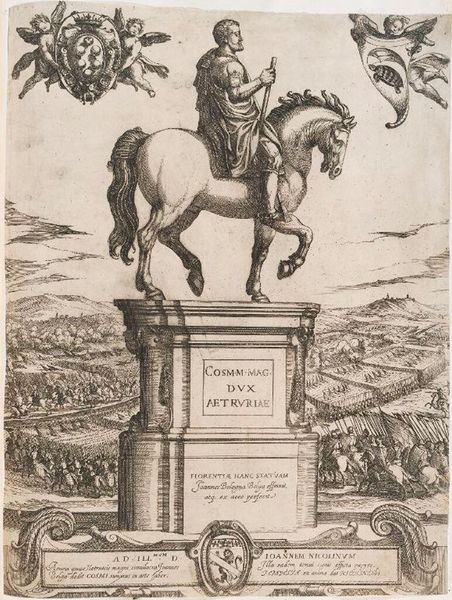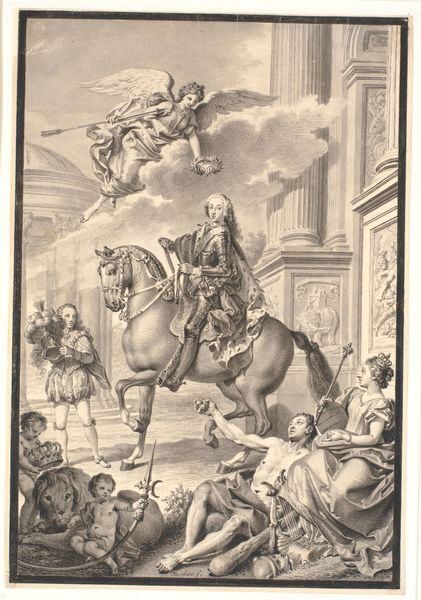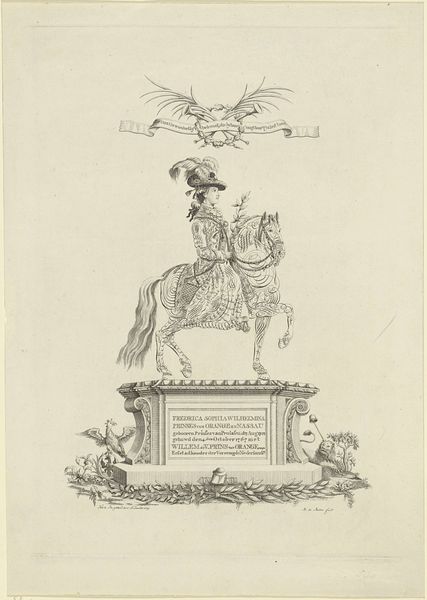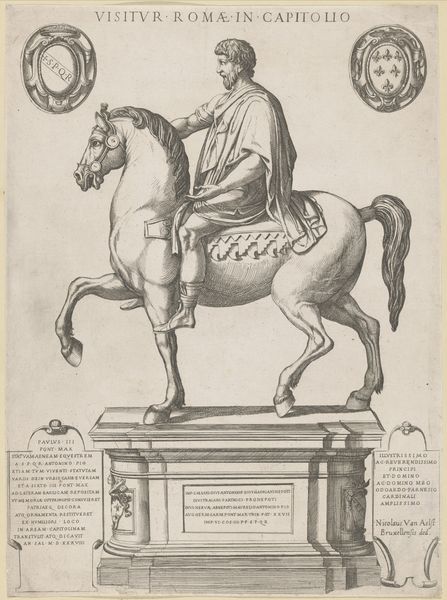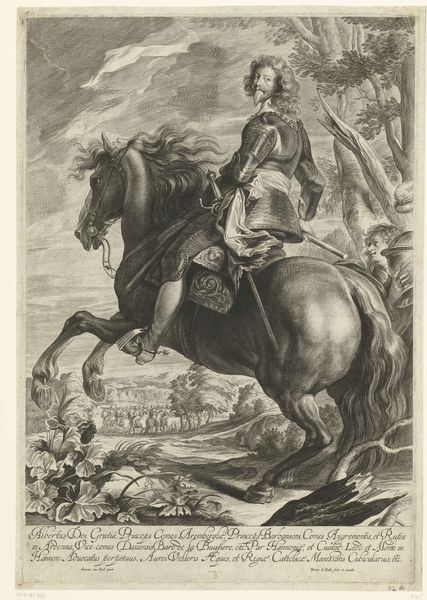
print, bronze, sculpture, engraving
#
portrait
#
baroque
# print
#
old engraving style
#
bronze
#
sculpture
#
history-painting
#
engraving
Dimensions: height 593 mm, width 435 mm
Copyright: Rijks Museum: Open Domain
This print depicts William III, Prince of Orange, on horseback, likely made to commemorate his reign. The laurel wreath crowning William is not merely decorative; it echoes the wreaths worn by Roman emperors, symbolizing victory and authority. This motif, deeply embedded in Western art, reappears across centuries, from ancient busts of emperors to Renaissance paintings of triumphant leaders. Consider, for instance, how similar wreaths adorned the heads of Roman gods like Apollo, representing divine power and cultural achievement. Over time, this symbol has been adopted and adapted, shifting from religious significance to secular displays of power. Psychologically, the wreath taps into our collective memory, evoking associations of triumph, heroism, and the cyclical nature of power. This image resonates with the weight of history and the powerful emotions associated with leadership and victory, engaging us on a subconscious level. The laurel wreath, therefore, is not simply an accessory but a potent symbol that carries layers of historical and cultural meaning.
Comments
No comments
Be the first to comment and join the conversation on the ultimate creative platform.
